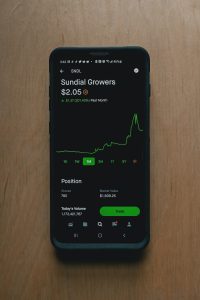Forex trading is an ever-changing and complex financial market. To be successful in forex trading, traders need to understand the various concepts and terms used in the market. One of the most important concepts in forex trading is support and resistance. In this article, we will discuss what support and resistance are and how they can be used in forex trading.
What is Support in Forex Trading?
Support is a price level at which demand for a particular asset is expected to be strong enough to prevent the price from declining further. In other words, support is a level where buyers are willing to step in and buy the asset, causing the price to bounce back up. Support can be seen as a floor for the price of an asset.
Support levels can be identified by looking at the historical price movements of the asset. Traders can use technical analysis tools such as trend lines, moving averages, and Fibonacci levels to identify support levels. The more times the price has bounced off a particular level, the stronger the support level is considered to be.
Support levels can also be influenced by psychological factors. For example, if a stock has a support level at $50, traders may be hesitant to sell the stock below that level because they believe the stock is undervalued at that price.
What is Resistance in Forex Trading?
Resistance is a price level at which supply for a particular asset is expected to be strong enough to prevent the price from rising further. In other words, resistance is a level where sellers are willing to sell the asset, causing the price to stop rising. Resistance can be seen as a ceiling for the price of an asset.
Resistance levels can also be identified by looking at the historical price movements of the asset. Traders can use technical analysis tools such as trend lines, moving averages, and Fibonacci levels to identify resistance levels. The more times the price has bounced off a particular level, the stronger the resistance level is considered to be.
Resistance levels can also be influenced by psychological factors. For example, if a stock has a resistance level at $100, traders may be hesitant to buy the stock above that level because they believe the stock is overvalued at that price.
How to Use Support and Resistance in Forex Trading?
Support and resistance levels can be used in forex trading to identify potential buying or selling opportunities. When the price of an asset approaches a support level, traders can look for buying opportunities. When the price of an asset approaches a resistance level, traders can look for selling opportunities.
Traders can also use support and resistance levels to set stop-loss orders. A stop-loss order is an order placed with a broker to sell a particular asset once it reaches a certain price. By setting a stop-loss order just below a support level, traders can limit their losses if the price of the asset breaks below the support level.
Similarly, by setting a stop-loss order just above a resistance level, traders can limit their losses if the price of the asset breaks above the resistance level.
Conclusion
Support and resistance are two important concepts in forex trading. Support is a price level at which demand for a particular asset is expected to be strong enough to prevent the price from declining further. Resistance is a price level at which supply for a particular asset is expected to be strong enough to prevent the price from rising further.
Traders can use support and resistance levels to identify potential buying or selling opportunities and to set stop-loss orders to limit their losses. By understanding these concepts, traders can make better informed trading decisions and improve their chances of success in the forex market.





